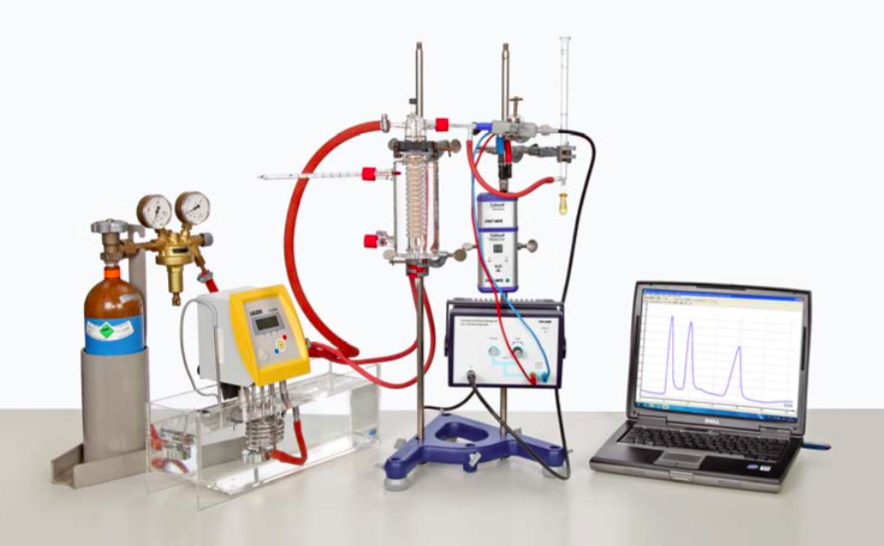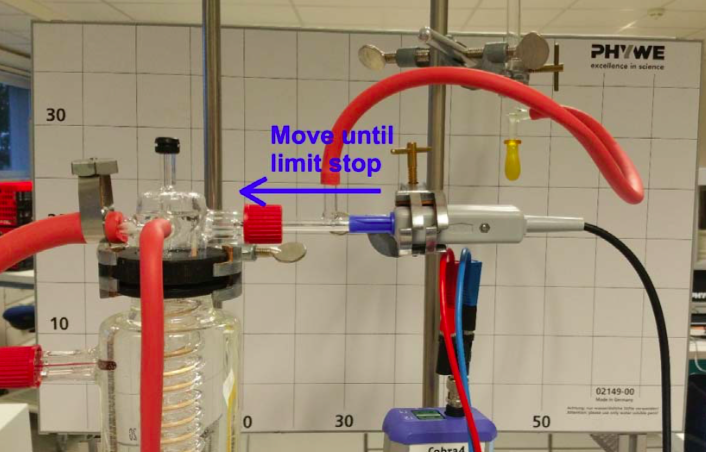Item no.: P3031760
Principle
Chromatographic procedures allow a separation of substance mixtures with the aid of a stationary separation phase and a mobile phase. In gas chromatography the mobile phase is a gas. The mobile phase, to which the mixture to be separated is added, transports the substance mixture through the separation column at a constant flow rate. Interactions occur between the mobile phase and the stationary phase. The establishment of equilibria between the stationary phase and the different substances (distribution equilibria, adsorption-desorption equilibria) results in different migration rates of the individual components. At the end of the column there is a detector in the form of a thermal conductivity cell, which can detect the different substances on the basis of their differing thermal conductivities. The detector signal is recorded as a funtion of time. The different thermal conductivities of the carrier gas and the substance cause temperature alterations in the electrically heated temperature sensor, which is located in a Wheatstone bridge circuit. The resulting electrical signal is recorded by a plotter as a function of time (chromatogram).
Tasks
- Determine the retention times of different gases and perform a chromatographic material separation of a mixture of butane gases.
- Separate and identify the components of a two-component mixture consisting of ethanol and ethyl acetate chromatographically.
What you can learn about
- Chromatography
- Chromatogram
- Multiplicative distribution
- Nernst’s law of distribution (number of theoretical trays)
- Thermal conductivity detector
Necessary accessories
- Precision balance 620g/0.001g
Software provided. Computer not included.


